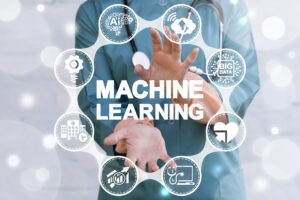 Machine learning is a relatively young technology that is just discovering its true potential. Today, on the threshold of great changes in science and technology, machine learning can increase the competitiveness of businesses, prevent fatal mistakes in planning, transform energy and ensure prosperity for automated systems.
Machine learning is a relatively young technology that is just discovering its true potential. Today, on the threshold of great changes in science and technology, machine learning can increase the competitiveness of businesses, prevent fatal mistakes in planning, transform energy and ensure prosperity for automated systems.
From the point of view of applicability, machine learning can be used in a wide range of product niches. Given the fact that the technology is going through a development stage, the range of intended use is only growing. At the same time, the most promising advantage of machine learning is that it can be used to predict events. Forecasting accuracy depends on many components: the information content of the data, the algorithms used, the system model, and much more. The only obstacle to the large-scale application of machine learning can be noted the emphasis on static data. That is, the algorithm takes into account data that is produced in today’s time, while it is not at all necessary that in the future they will not change their natural values.
Deep learning is the second stage in the development of artificial intelligence technology. Like machine learning, deep learning is based on algorithms and data, only the algorithm of the model’s actions is presented in the neural network format, which allows the system to learn independently and achieve better results. This means that today machine learning services are especially relevant.
Collection and systematization of data
The fundamental components of a machine learning architecture are data. The process of collecting information of interest occurs on a systematic basis, which allows you to determine the relevance of the source, test the hypothesis and compare the data obtained.
Gathering the right data is critical to making the model work correctly, both in machine learning and in deep learning. Clearly labeling, classifying and organizing data greatly reduces the risk of errors. The accuracy of predictive models is based on the informativeness of the data from which they are built, so the validation and classification of the data determine the success of the result.
The amount of information is also a significant parameter. Before modeling and choosing an algorithm, it will be necessary to analyze the model for a sufficient amount of information. Machine learning does not require much data to identify an image or organize information, while voice translation or production process curation requires a set of data, also known in IT as “big data”: https://data-science-ua.com/ml-development-company/machine-learning-software-development/.
Application of the algorithm
Initially, you will need to select a system model. The type of model depends on the purpose of the system and the complexity of the tasks that need to be solved. Before integrating the model, you need to check the following factors:
- Quantity and reliability of data. If the model will be integrated into the Excel environment, the data set must be labeled and ordered according to the architecture of the software components.
- Handling spaces.
- Information format. In most cases, the data needs to be converted to the required format.
After preparing the data, it is required to decide on which model the system will be tested and trained. A typical method is the division of a data class into 3 segments: training, verification and testing.
After testing each model, you need to sort out the best results and analyze the work in detail. The result should be a list of models sorted by objective indicators.


